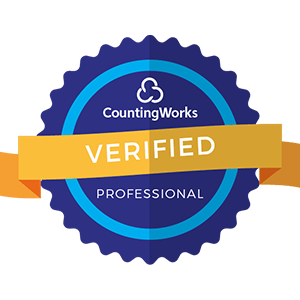
In today's fast-paced, ever-evolving world, the importance of continuous learning and development cannot be overstated. Organizations that prioritize learning and development not only keep up with the changing times but also cultivate a workforce that is engaged, adaptable, and equipped to tackle new challenges. In this article, we will explore various strategies for fostering a culture of learning and development within your organization, drawing upon expert insights and real-world examples.

Before diving into the strategies, let's examine why creating a culture of learning and development is so crucial:
Increased Employee Engagement:When employees feel that their organization invests in their growth and development, they are more likely to be engaged and committed to their work.
Improved Adaptability: A learning culture prepares employees to adapt to changes in the industry, technology, and market conditions, ensuring that your organization remains competitive.
Enhanced Innovation: Continuous learning sparks creativity and encourages employees to think outside the box, leading to innovative ideas and solutions
Attracting and Retaining Top Talent: Organizations known for their strong learning culture tend to attract and retain high-caliber employees who value growth opportunities.
One of the most effective ways to foster a learning culture is for leaders to model the behavior they wish to see in their employees. When leaders actively engage in learning and development activities, it sends a powerful message to the rest of the organization.
"Leaders who are lifelong learners inspire their teams to do the same. They create an environment where curiosity is celebrated, and growth is a shared goal." - Simon Sinek, author and motivational speaker
Here are some ways leaders can lead by example:
Recognizing that individuals have different learning styles and preferences, it's essential to offer a variety of learning opportunities to cater to everyone's needs. Some employees may thrive in classroom-style training sessions, while others prefer self-paced e-learning or hands-on experiences.
Consider implementing the following learning options:
"Diversity in learning opportunities is key to engaging all employees in their development journey. By offering a mix of formal and informal, individual and collaborative learning experiences, organizations can ensure that everyone has access to growth opportunities that resonate with them." - Josh Bersin, industry analyst and founder of Bersin by Deloitte

Creating a culture of learning and development requires more than just providing training opportunities; it also involves encouraging employees to reflect on their experiences and seek continuous feedback. Regular feedback helps individuals identify areas for improvement and track their progress over time.
Some effective ways to promote feedback and reflection include:
"Reflection is a critical component of the learning process. It allows individuals to make sense of their experiences, identify patterns, and extract valuable insights that can be applied to future challenges." - David Kolb, Professor of Organizational Behavior at Case Western Reserve University
To reinforce the importance of learning and development, it's crucial to recognize and celebrate those who actively engage in these activities. By showcasing success stories and rewarding employees who go above and beyond in their learning efforts, organizations can create a positive feedback loop that encourages others to follow suit.
Consider implementing the following recognition and reward strategies:
"Recognizing and rewarding learning sends a powerful message about what your organization values. It reinforces the idea that learning is not just a nice-to-have but a fundamental part of your company's DNA." - Whitney Johnson, author of "Build an A-Team: Play to Their Strengths and Lead Them Up the Learning Curve"

For a learning culture to be truly effective, it must be aligned with the organization's overall business goals and strategic objectives. When employees understand how their learning and development efforts contribute to the company's success, they are more likely to be motivated and engaged in the process.
To align learning with business goals, consider the following approaches:
"Aligning learning with business goals ensures that employees are not only growing personally but also contributing to the organization's success. It creates a sense of purpose and shared ownership in the learning journey." - Julie Winkle Giulioni, co-author of "Help Them Grow or Watch Them Go: Career Conversations Employees Want"
Creating a culture of learning and development is not a one-time initiative but an ongoing commitment that requires consistent effort and support from all levels of the organization. By implementing the strategies outlined in this article, you can cultivate an environment where continuous learning is valued, celebrated, and aligned with business goals.
Remember, a learning culture is not just about providing training opportunities; it's about fostering a mindset of curiosity, growth, and innovation. When employees feel empowered to learn and develop, they are more engaged, productive, and likely to stay with the organization for the long haul.
As Peter Senge, author of "The Fifth Discipline: The Art and Practice of the Learning Organization," states:
"The only sustainable competitive advantage is an organization's ability to learn faster than the competition."
By prioritizing learning and development, you not only invest in your employees' growth but also in the future success of your organization. So, start today by taking the first steps towards creating a culture where learning thrives, and watch as your organization reaps the benefits of a highly skilled, adaptable, and engaged workforce.


